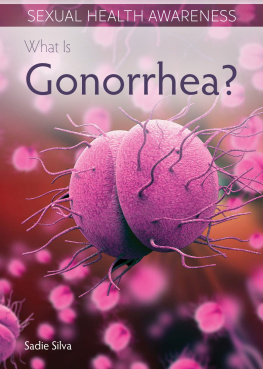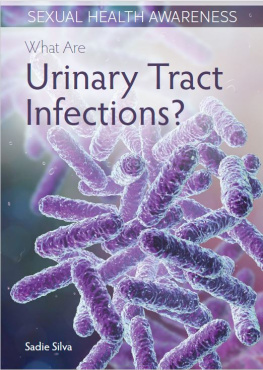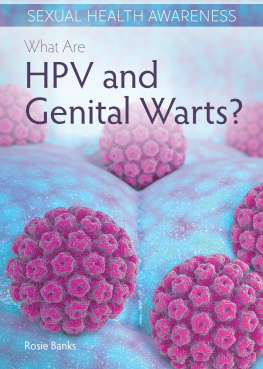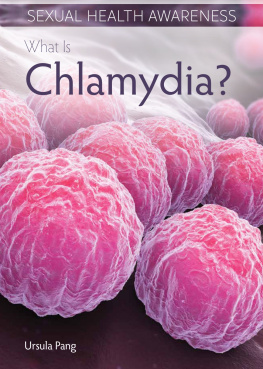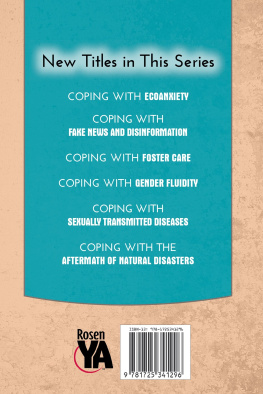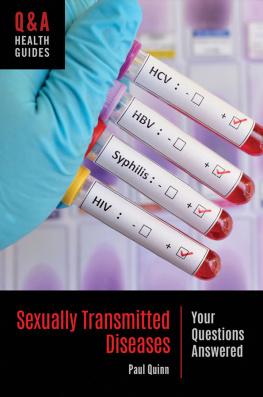Published in 2022 by The Rosen Publishing Group, Inc.
29 East 21st Street, New York, NY 10010
Copyright 2022 by The Rosen Publishing Group, Inc.
First Edition
Portions of this work were originally authored by Tamra Orr and published as Gonorrhea. All new material in this edition was authored by Sadie Silva.
All rights reserved. No part of this book may be reproduced in any form without permission in writing from the publisher, except by a reviewer.
Library of Congress Cataloging-in-Publication Data
Names: Silva, Sadie, author.
Title: What is gonorrhea? / Sadie Silva.
Description: New York : Rosen Publishing, [2022] | Series: Sexual health awareness | Includes index. | Description based on print version record and CIP data provided by publisher.
Identifiers: LCCN 2021031851 (print) | LCCN 2021031852 (ebook) | ISBN 9781499472257 | ISBN 9781499472240 (paperback) | 9781499472264 (ebook) Subjects: LCSH: Gonorrhea.
Classification: LCC RC202 (ebook) | LCC RC202 .S55 2022 (print) | DDC 616.95/15--dc23
Manufactured in the United States of America
Some of the images in this book illustrate individuals who are models. The depictions do not imply actual situations or events.
CPSIA Compliance Information: Batch #CWRYA22. For further information contact Rosen Publishing, New York, New York at 1-800-237-9932.
CONTENTS
CHAPTER 1
Gonorrhea, Past and Present
CHAPTER 2
Sex, Signs, and Symptoms
CHAPTER 3
Staying Smart About Sex
CHAPTER 4
Tests and Treatment
CHAPTER 5
Getting Real About Gonorrhea
INTRODUCTION
Sexually transmitted infections (STIs) are common health issues, and their symptoms can range from annoying to very serious if left untreated. The Centers for Disease Control and Prevention (CDC) report that 1 in 5 people are dealing with an STI in the United States. And young people arent immune to getting them. In fact, half of all STI cases are reported in people aged 15 to 24 years old. STIs can affect your sexual health, so its important to learn as much as you can about what they are and how to prevent them.
Common STIs include HPV, chlamydia, HIV, and gonorrhea. Gonorrhea accounts for about 1.6 million new infections in the United States each year. In 2018, gonorrhea caused $271 million in direct medical costs. People who contract this infection deal with genital pain that can also cause missed days of school and work.
Gonorrhea is nothing new. In fact, its one of the oldest known types of STI in history. For much of history, the bacterium that causes gonorrhea was unknown, and because of that, it was untreatable. But today, gonorrhea is completely curable. The bad news is that curing it is becoming more challenging because of peoples increasing use of antibiotics, which makes bacteria more resistant to the effects of antibiotics.
The bacterium that causes gonorrhea, Neisseria gonorrhoeae, is complex and adaptable. Once treated by a certain type of antibiotic, the gonorrhea bacteria will not respond to it again. Because of antibiotics and sexual health education, the rate of gonorrhea dropped dramatically between 1975 and 1997, hitting a record low in 2009. However, since then, it has slowly begun to rise again. By 2017-2018, rates of gonorrhea had gone up 82.6 percent since that 2009 low.
Fortunately, as with many STIs, gonorrhea is preventable. Sexual activity is the greatest risk factor for contracting gonorrhea. Choosing your sexual partner wisely and being open to communication and testing can help decrease your chances of contracting an STI like gonorrhea. Learning about other precautions and preventative behaviors can also help protect you from gonorrhea and show you how to take responsibility for your sexual health.

Many health centers and clinics are available to support you and treat you for an STI.
If you do test positive for gonorrhea, you can still get the treatment and support you need. Some people feel ashamed or embarrassed when they contract an STI, because theres often a stigma around sexual activity. However, no matter how someone gets gonorrhea, they deserve to get the care and medicine they need to get better. Doctors and other medical professionals are able to treat this STI fairly easily, especially if its caught early.
Gonorrhea can impact people of any biological sex and gender identity. However, its important to know how STIs like gonorrhea can affect you based on your assigned sex at birth (a label based on your hormones, chromosomes, and genitals at birth) or the body parts that you have. Thats because those genetic, hormonal, and anatomical factors will play a role in how gonorrhea affects you and what your symptoms, and risks are.
The most powerful tool against gonorrhea is knowledge. The more you know, the more power you have toprevent, treat, and deal with an STI. Taking control of your sexual health is one of the challengesand necessitiesof becoming sexuallyactive.

Choosing a partner who is open and honest about their sexual history and willing to be tested can help keep you safe from STIs.
P eople have lived with gonorrhea for thousands of years. Its one of the oldest STIs known among humans. Although its origins arent completely known, mentions of this sexually transmitted infection have been found in ancient writings. Medical professionals and researchers can use knowledge from the past to figure out how to treat, and how not to treat, this painful infection.
THE HISTORY OF GONORRHEA
When was the first case of gonorrhea recorded? Some researchers say it was mentioned in Chinese and Middle Eastern cultures more than 4,000 years ago. Records from that time period mention a disease that sounds a great deal like gonorrhea. In 2600 BCE, Chinese emperor Huang Ti described a condition that resembled gonorrhea. Even the Old Testament in the Bible refers to an issue of seed (semen) that could be gonorrhea. The book of Leviticus gives precautions one could take so as not to contract it. The disease finally got a name when the Greek physician Galen (131-200 Ce) put together the Greek words for semen (gonos) and to flow (rhoia) to create the name gonorrhea.

This illustration shows three historical figures who made hugeadvances in medicine: Galen (left), Avicenna (middle), andHippocrates (right).
MANY NAMES, ONE STI
Some people don't know gonorrhea by its real name. That's because it has a lot of nicknames; it's also known as GC, the dose, the drop, and most commonly, the clap. But what does the clap even mean?
We don't know the true origin or reason behind this nickname, but there are several theories Some people think it comes from the French word clapier, which means brothel Since many cases of gonorrhea came from brothels, this name seems fitting. However, other people trace the word back to an Old English term, "Happen," which means to throb (which happens with inflammation). Another theory states that the nickname came from a rough (and fortunately outdated) medical treatment of clapping an infected penis against a hard surface with a big, hardback book in order to remove pus. Another theory says "the clap" comes from a clapping sensation that an infected person feels during urination. Regardless, gonorrhea by any other name is still a very painful infection.

